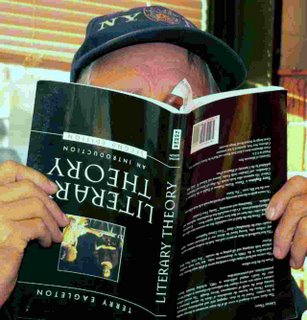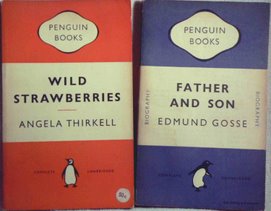Penguin Paperbacks & Pulp, History & Collecting, from Vintage Voice at Popula
from - Vintage Voice at Popula by Oliver Corlett:
The First 20th Century Paperbacks
A landmark in the history of the paperback in the English-speaking world was the arrival of Penguin, the first really 'respectable' paperback imprint, in 1935. The story goes that Allen Lane, Chairman of The Bodley Head, a London publisher, was returning by train from a weekend in the country with one of his authors -- Agatha Christie -- and her husband. The Bodley Head, like many publishers of the time, was suffering precipitously declining sales, and had been since the onset of the Depression, and Lane was looking for a way to save his troubled business. Browsing the station kiosks for something to read while he waited for the train, he could find nothing to buy except slick magazines and low-quality paperback fiction (like the cheaply produced Routledge's Railway Classic reprint series). It occurred to him that good quality fiction and nonfiction might find a wider readership if only books were more affordable, and on July 30th, 1935 he introduced the Penguin imprint to an unsuspecting world.
Early Penguins, with their distinctive orange/blue/green, white and black covers (no pictures, just a title, the Penguin logo and an author), were all priced at sixpence (that is, 2 1/2p in today's British currency, or about 4 cents at today's exchange rates) - about the same as a pack of 10 cigarettes, or a fifteenth the price of a typical hardcover at the time - and for the first time were sold not just in bookstores but in mass-market outlets like Woolworths and, naturally, railroad station kiosks. Lane took care that the type, the ink and the paper were of good quality, to match the content. The low price was allegedly made possible not, as many assume, because the covers were paper rather than cloth, but because the covers were paper rather than cloth, but because print runs were substantially larger than for hardcover books - 17,000 copies was the breakeven volume; hence, Lane took a substantial gamble that there would be sufficient demand in the British market to meet a run of this size. In the event, of course, he was right. Within six months of the introduction of the first 10 titles, about one million Penguins had been sold; and Penguin Books sold over three million copies in its first full year, 1936. This was really what started the ball rolling for the modern paperback industry.
The first ten titles?
The Mysterious Affair at Styles by Agatha Christie
Madame Claire by Susan Ertz
A Farewell to Arms by Ernest Hemingway
Poets Pub by Eric Linklater
Carnival by Compton Mackenzie
Ariel by Andre Maurois
Twenty-Five by Beverly Nichols
The Unpleasantness at the Bellona Club by Dorothy Sayers
Gone to Earth by Mary Webb
William by E.H. Young
In 1939, Penguin opened an office in the US, under the direction of an Englishman named Ian Ballantine, a man who was destined to play an important role in shaping the paperback industry in the US in the following decades. (In 1945 Ballantine, together with Bennett Cerf, founded Bantam Books, and in the early 1950s he founded Ballantine Books; both of these went on to become significant factors in the US and world publishing markets).



No comments:
Post a Comment